What are forces ?
Forces are the processes that operate (work) within or on the earth’s crust
There are different forces that affects the earth’s but can be grouped into two major types :-
1.Internal forces (endogenetic/endogenic processes)
2.External forces(exogenetic /exogenic forces )
INTERNAL FORCES (ENDOGENETIC/ENDOGENIC)
These are forces that operate within (inside) the earth’s crust
OR
These are forces which operates beneath (under)the earth’s surface. These forces are generally referred to as TECTONIC FORCES.
A word tectonic is derived from a Greek word tecton which means builder
♦ Tectonic means building
– internal forces(tectonic forces) which are divided into
(1)Earth movement (Diastrophism)
(2)Vulcanism/ Vulcanicity/Volcanic erruptions
EARTH MOVEMENTS
These are also known as Diastrophism
Definition: is the movement of the solid parts of the earth towards each other or away from one another or side way.
Types of Earth movement.
Earth movements are classified into two (2) main groups:-
(i) Vertical or radial movements
(ii) Lateral or horizontal movements or tangential.
I ) VERTICAL OR RADIAL MOVEMENTS.
⇒These are the upward and downwards movements or forces .These forces cause the uplift (epeirogenic) and the downward movement (cymatogenic).
⇒These forces which causes the vertical earth movements operate from the interior upward toward the surface or downward from the surface to the interior.
These forces cause
(a) The crustal rock to fault. When faults develop produce feature like plateaus, basin, Block Mountain (host) and escapements.
(b) Sea level changes due to the upward lift of the land or sinking of the land.
NB: This changes in the sea level is not eustatic change (not eustatic movement)but is due to vertical forces.
⇒The eustatic change is the changes of the sea level due to ice melt during ice ages
II LATERAL/HORIZONTAL MOVEMENTS
These are also referred as organic forces (movement) because they are responsible for the build of the mountains (Orogenesis means the process of mountain building)
lateral forces are of two(2) types:-
1) Compressional forces
2) Tensional forces.
Compressional forces: – Are forces which move towards each other ie move against each other.
– They tend to shorten the crust (the land) i.e. they squeeze the land.
They normally cause :-
(i) Folding of land hence fold mountains
(ii) Break the land to form faulting which may produce features like block mountains, rift valley and faults.
Tensional forces: – Are forces that tend to stretch the land i.e. the force move away from each other, they pull the land away.
–The forces cause faulting of the crust and produce features like faults, Block Mountains, rift valley.
FEATURES PRODUCED BY COMPRESSIONAL FORCES
1.Fold Mountains.
Fold Mountains are formed when a piece of the crust is subjected to compressional forces. These forces tend to shorten the crust so the land end up in folding(wrinkling or crumpling) hence develop fold.
-The earth’s crustal rocks produced upward fold known as anticlines (up fold) and downward folds known as synclines (down fold)
(a)Before folding (b)After folding
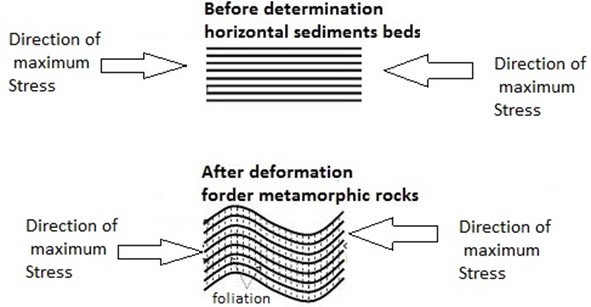
The anticline the crest part while the syncline is the trough part.
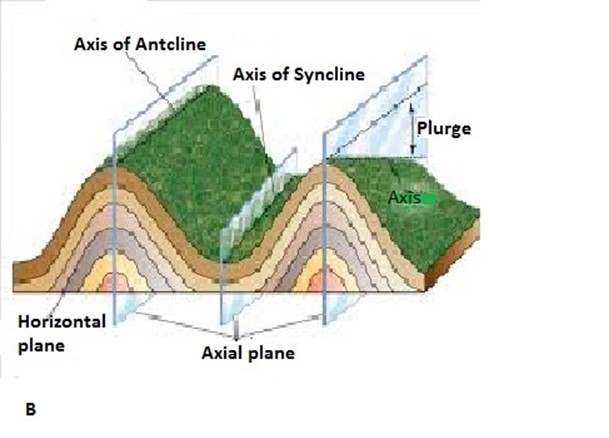
TYPES OF FOLDS
i)simple folds or symmetric fold:- the fold has equal limbs.
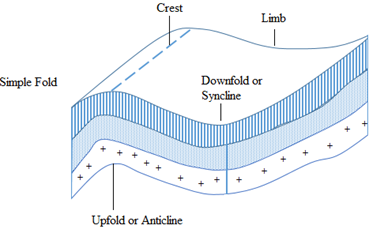
ii)Asymmetric fold :-is the fold with one limb steeper than the other.
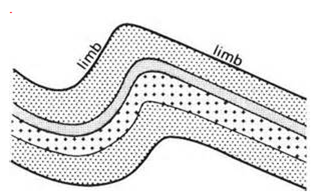
iii) Over fold:-one limb is pushed over the other.
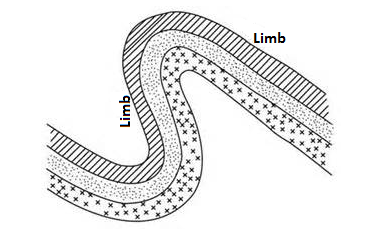
iv) Recumbent fold:-the limb is pushed over the other completely.
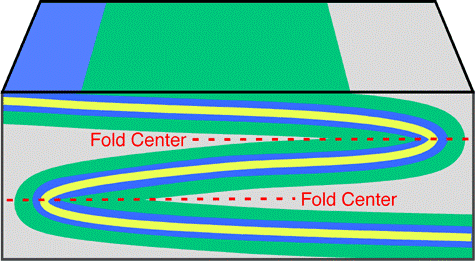
v)Overthrust fold(nappe):- when temperature is very great a fracture occurs in the fold (such that one limb breaks off)and the one limb is pushed over the other limb along the line of thrust plane
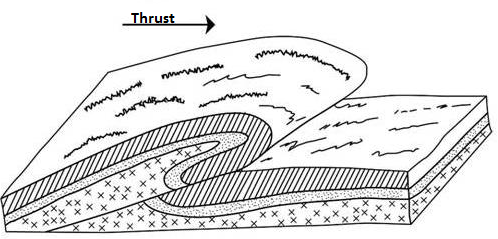
Example of fold mountains are Atlas (N. Africa), Aplas(in cape ranges in s. Africa),Himalayas(in Asia),Urals(in Rocky of N.America), Andes(s. America), Appalachian(U.S.A) Great divide range in Australia.
2) Rift valley (grabens).
This can be formed by both tensional and compressional forces.
Rift valley formed by compressional forces
How it formed:-
(a)layers of rocks are subjected to compressional force
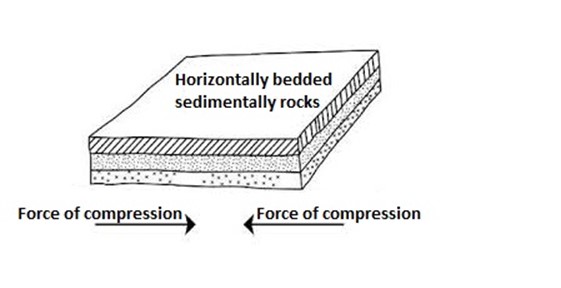
b)Fault develop
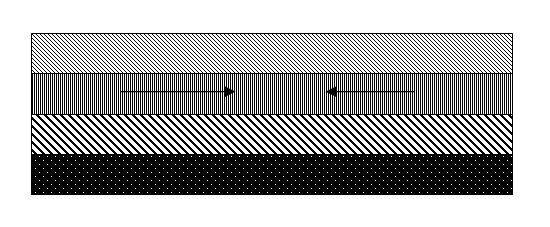
c)The side blocks(outer blocks) move (thrust)upward over the center block
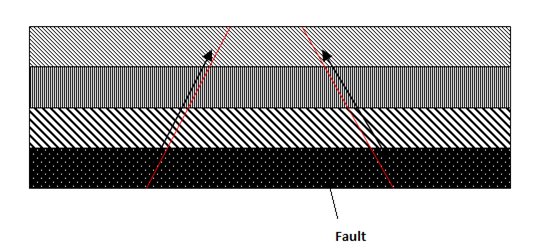
(d)later the over-hanging sides of the rift valley are removed (worn & back)by erosion
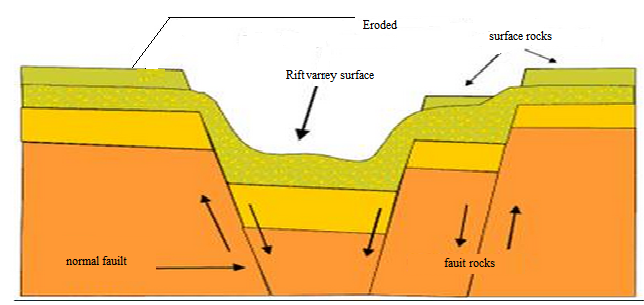
3) Block mountains (Horst) by compressional
Are formed when compressional force cause the formation of series of fault, such that the central block forced up (to form a block).Examples usambara, Ruwenzori, Vosges and Black forest.
How is block mountains formed by compressional force:-
a)A piece of crustal rock is subjected to compressional force
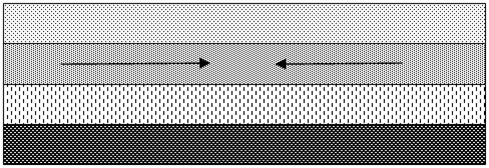
b) A series of fault develops.
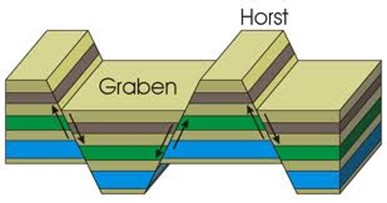
c) The side blocks (outer blocks)and central block move (thrust) upward.
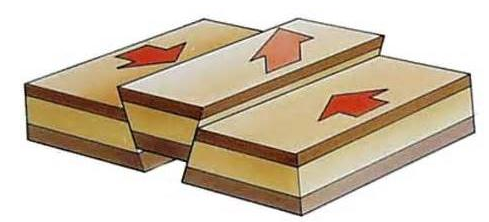
NB: Where series of faults occur both block mountain and rift valleys develop.
FEATURES PRODUCED BY TENSIONAL FORCES
Tensional forces can frm due to fault there are several features which may be produced they include Rift valley, block mountains(horsts) and fault.
1)Rift valley (Grabens)
⇒ A rift valley is an elongated trough with steep sides.
⇒A rift valley can either be formed due to tensional or compressional forces .
Formation of a rift valley by tensional forces
a).The line of weakness develop to form normal fault (Normal faults are formed )
b). The central block subsides(sinks)to form a rift valley
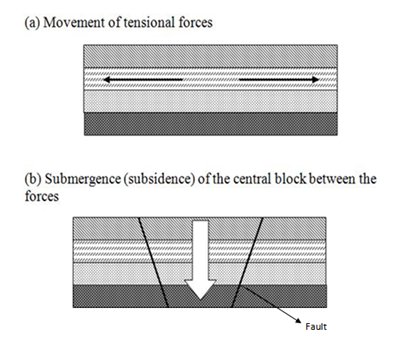
3. Block mountains (horsts) by tensional
These are tables like mountains formed due to fault
They are note extensive like fold mountains ,they have almost flat surface
Example Vosges and Black forest mountains(Europe) -Usambara, Uluguru in -Ruwenzori and Uganda boarder-Mount Sinai in asia.
Formation of blocks(horsts)by tensional forces.
a)A piece of crust is subjected to tensional force.
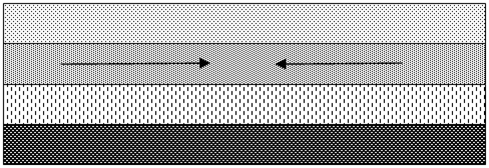
b)A series of fault develo
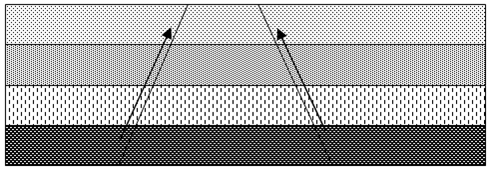
c)some parts subside leaving some standing high as block
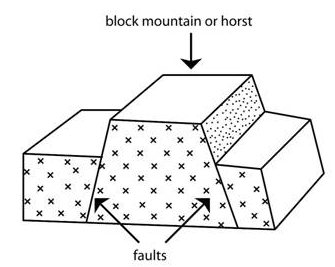
where series of fault develop both block mountains and rift valleys are formed.
Fault scarp.
This is an escapement which is a steep slope when the land falls from a higher to a lower level
-it is formed soon after displacement
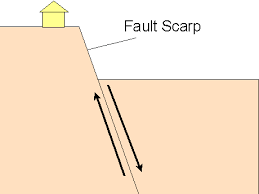
Note
First -Tensional forces cause fault only
-Tensional forces cause the normal fault
Second-compressional forces cause faulting and folding
-compressional force causes the reverse fault
Faulting: is the process which involves the fracturing of the crust rock due to tectonic forces to form faults.
This process is associated with the movement. The rock block (i.e. rock displacement
A fault –is a fracture in the crust due to stress or strain associated with rock displacement.
Fault is cause by both tensional and compressional forces
Joint: is a crack in the rock due to stress but is not associated with rock displacement
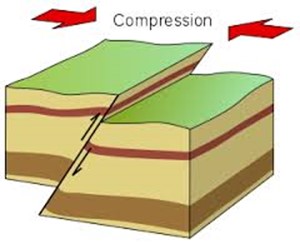
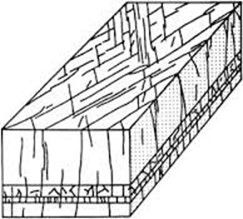
-The paths of a fault on the surface of the earth s called the fault line (line of fault)
-some of the fault line may cover hundreds of kilometers.
FOLDING :is the wrinkling ,bending or crumpling of the earth crut producing upward folds(anticlines) and downward folds (synclines)
-folding is caused by compressional forces.
Significance of features produced by earth movements(effect of feature produced by earths movement).
-Both vertical and lateral force cause either folding and or faulting which in turn from fold and block mountains ,plateaus , rift valley basin and other feature s
These different features have the following positive (good)effects and negative( bad)effects.
Positive (good) effects
1.climatic influence mountain both fold and block receive orographic rainfall due to relief influence the windward side receive heavy rain at ll temperature are modified into cool(cold)
2.source of river : d to heavy rains and snow on mountains many rivers originate from them. Water used for irrigation.HEP generation, industrial and domestic uses.
3.source of minerals:-different minerals are obtained from fold mountain such as coal in Appalachian mountain gold in Colombia, silver in Peru.
-other mineral from block mountains example dolomite
4.attract tourism
Mountain skimming attract a lot of tourists for sporting activities (skidding) e.g. the cross Alps
-also rift valley forms a very attractive area due to presence of different lakes like Tanganyika , Natron, Manyra, Naivasha, etc ,presence of different volcanic cones and crater within it
5.slope of mountains have fertile soils for agriculture
Negative (bad) effects
1.The leeward side receive little or no rainfall hence hinder agricultural and a lot
2.sometimes folding causes some minerals to be buried deeper hence not easy to exploits
3.fault may cause some rivers to disappear I the ground
4.both mountains and rift valley hinder communication network
some mount sides are too steep or ruge, or have thick fog hidering both land and air transport
-earth movement also cause earthquakes and volcanic